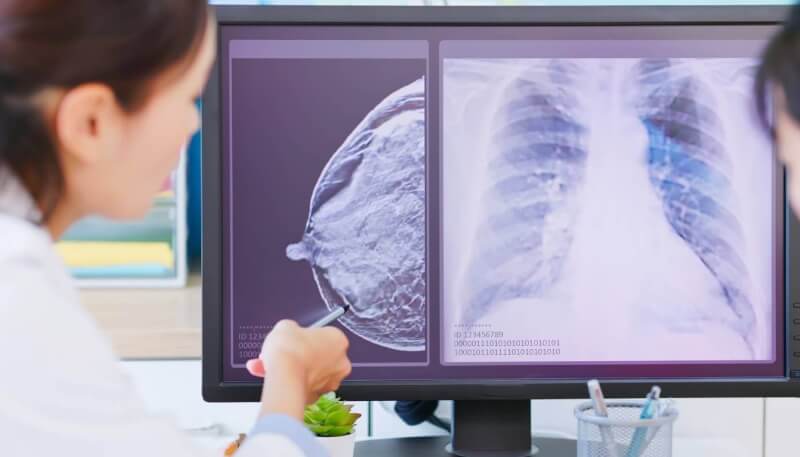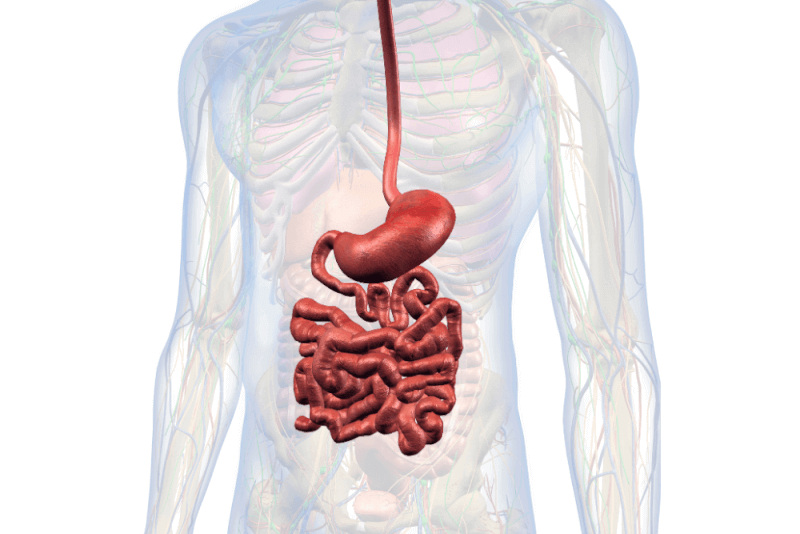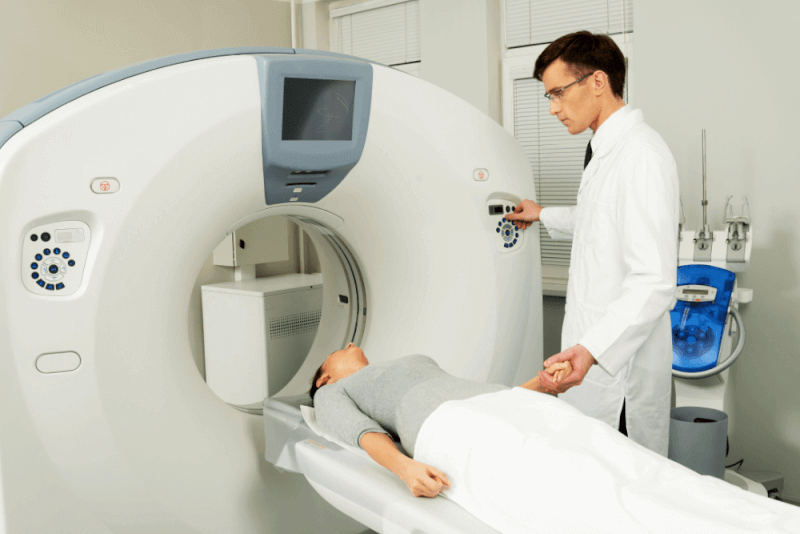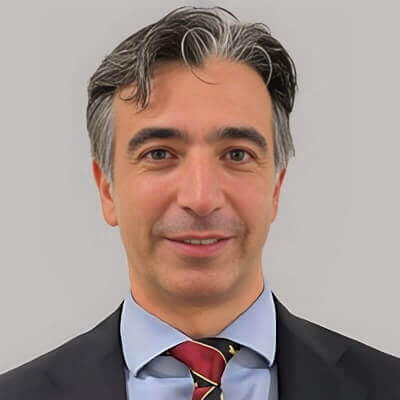What is breast cancer?
Breast cancer is cancer that develops in breast cells. Breast cancer, one of the most common types of cancer, can be seen in both men and women, but it is more likely to be seen in women.
Breast cancer, the most common type of cancer affecting women, is usually observed in women over the age of 50. However, breast cancer can also affect young women. Approximately 80% of breast cancer cases are invasive. For this reason, the tumor can spread from the breast tissue to other parts of the body.
Breast cancer in men
Since both women and men are born with a certain amount of breast tissue, breast cancer is a type of cancer that can also occur in men. Although it can be seen in men at any age, it is rare. The primary method in the treatment of breast cancer, which particularly affects older men, is the removal of breast tissue.
Symptoms of breast cancer in men
Symptoms that can be seen in case of breast cancer in men include the following.
- Nipple discharge or bleeding
- Swelling or thickening of the skin on the chest that is not caused by bees
- Change in skin color or flaking
- Inward rotation of the nipple
- Pitting of the skin
Causes of breast cancer in men
Since men are born with some breast tissue, breast cancer is to be expected. Other factors that cause breast cancer in men include the following.
- Advanced age
- Using hormone therapy or estrogen-containing drugs for prostate cancer
- Family history of breast cancer
- DNA changes that may lead to an increased risk of breast cancer
- Klinefelter syndrome
- Liver disease
- Obesity
- Testicular disease or surgery
Breast cancer diagnosis
Physical examination and mammogram techniques are primarily used to diagnose breast cancer. Afterwards, some or all of the following tests may be performed to confirm the diagnosis and determine the stage and type of breast cancer.
- Breast ultrasound
- Breast magnetic resonance imaging scan
- Breast biopsy
- Immunohistochemistry test to check for hormone receptors
- Genetic testing to identify the mutation that causes breast cancer
Symptoms of breast cancer
Breast cancer affects both breasts differently, but the symptoms it causes are very distinctive. Especially the appearance of differences in one breast compared to the other breast suggests breast cancer. However, some cases of breast cancer may not cause visible symptoms. Symptoms that can be seen in breast cancer include the following.
- Change in the shape, control or size of the breast
- Feeling a lump or mass that may be as small as a pea
- Swelling or thickening in the armpit or inside the breast during menstrual periods
- Change in the appearance and feel of the skin in the breast or nipple
- Pitted, wrinkled, scaly or inflamed breast skin or nipple
- One area of the chest appears purple red or darker in color than other areas
- Marble-like hardened area under the skin
- Clear, stained fluid or blood coming from the nipple
Causes of breast cancer
As with other types of cancer, breast cancer is caused when normal cells mutate into cancerous cells and these cancerous cells multiply to form tumors. It is not known exactly why breast cells mutate in breast cancer, but some factors are thought to be effective. These factors include the following.
- Over 55 years of age
- Becoming a woman
- Breast cancer in first-degree relatives
- BRCA1 and BRCA2 gene transfers
- Cigarette smoking
- Alcohol consumption
- Obesity
- Radiation exposure
- Hormone replacement therapy
Complications of breast cancer
Breast cancer can cause different complications in the patient. However, the most important of these is metastatic breast cancer. In the later stages of breast cancer, it can spread to other parts of the body, including the bones, brain, lungs and liver. The reason why the metastatic complication of breast cancer is so important is that one third of patients with early stage breast cancer later develop metastatic breast cancer.
Breast cancer treatment methods
The standard treatment for breast cancer is surgery. In addition, other treatment options such as chemotherapy and radiotherapy can be applied to the patient.
Chemotherapy
Chemotherapy, one of the treatment methods for breast cancer, can be administered to patients before or after breast cancer surgery. The various drugs used to kill cancerous cells in breast tissue are called chemotherapy. Chemotherapy drugs can be combined with other breast cancer treatment options.
Since chemotherapy causes some side effects, oncologists help patients with various methods. In addition to the short-term side effects caused by chemotherapy, there are also long-term side effects.
When is chemotherapy used?
Chemotherapy is administered to breast cancer patients in various periods and conditions. The answer to the question of when breast cancer patients are given chemotherapy is as follows.
Before surgery (neoadjuvant chemotherapy)
Chemotherapy before surgery helps to reduce the size of the tumor. This means that less healthy breast tissue is removed. In addition, the chemotherapy administered before surgery can help to understand which chemotherapy drugs are more effective for the patient.
After surgery (adjuvant chemotherapy)
Surgery to remove the tumor is sometimes not enough to remove all cancer cells. These cells may be microscopic and too small to be detected by tests. To prevent this risk, breast cancer patients are given chemotherapy to kill the remaining cells. Chemotherapy after surgery also reduces the risk of breast cancer recurrence.
Metastatic breast cancer
If breast cancer spreads to other tissues, chemotherapy is the main treatment.
Inflammatory breast cancer (IBC)
Inflammatory breast cancer is not seen as a tumor that the surgeon can remove. For this reason, chemotherapy is usually the first line of treatment in non-inflammatory series.
Triple negative breast cancer (TNBC)
A combination of chemotherapy and immunotherapy is used to treat negative breast cancer.
HER2+ breast cancer with a high chance of recurrence
It is treated using a combination of chemotherapy and targeted therapy.
Chemotherapy drugs commonly used in breast cancer
There are many different types of chemotherapy drugs used in breast cancer. Depending on the nature of the breast cancer, one or more drugs may be used. The following drugs are used in adjuvant and neoadjuvant breast cancer therapy chemotherapy.
- Doxorubicin
- Epirubicin
- Paclitaxel
- Docetaxel
- 5-fluorouracil
- Kapesitabin
- Cyclophosphamide
- Carboplatin
Chemotherapy drugs used in patients with metastatic breast cancer include the following.
- Albumin-bound paclitaxel
- Taksanlar
- Iksabepilon
- Eribulin
- Doxorubicin (Adriamycin)
- Liposomal doxorubicin
- Platinum agents
- Vinorelbin
- Kapesitabin
- Gemcitabine
- Ado-trastuzumab emtansine
- Fam-trastuzumab deruxtecan
- Sacituzumab govitecan
Side effects of chemotherapy
Side effects caused by chemotherapy for breast cancer patients vary depending on the type of drugs used and the duration of use. A significant part of the chemotherapy disappears immediately after the end of treatment. However, some side effects may persist even weeks or months later. The most common side effects of chemotherapy include the following.
- Brain noise can be seen for 6 months to a year after chemotherapy treatment
- Patients may experience fatigue during treatment or within 6 months after treatment
- Nausea and vomiting may also be observed during treatment and for 2 to 3 weeks after treatment
- Constipation and diarrhea can be common symptoms of chemotherapy
- Hair may fall out during chemotherapy and grow in a different color afterwards
- Patients may experience loss of appetite during treatment
- Skin may be drier and itchy
- Nails can be more brittle
- Numbness and tingling in the hands and feet, which disappears with the end of treatment
Intraoperative radiation therapy (IORT)
In intraoperative radiation therapy during the lumpectomy procedure, radiation beams are delivered directly to the tumor or tumor bed. Unlike conventional radiation therapy, known as external beam radiation therapy, radiation is delivered only to a specific area, which offers many advantages. These advantages include the following.
- IORT is a procedure that is completed in a shorter period of time.
- It is administered as a single dose over several weeks.
- It has fewer side effects.
- A higher dose of radiation is sent.
- It ensures the protection of healthy tissues.
- It can reduce the risk of cancer recurrence.
- It is started earlier than the traditional method.
- While there are no repeat doses in conventional radiation therapy, IORT treatment involves repeat doses.
Side effects of intraoperative radiation therapy
The most common side effects of intraoperative radiation therapy include excessive fluid accumulation in the breast tissue and bruising. In addition, the side effects that can be seen include the following.
- Sleep problems
- Anemia
- Skin problems
- Bleeding
- Agri
- Constipation
- Headache
- Diarrhea
- Burnout
- Dizziness
Immunotherapy
Immunotherapy, a treatment method that helps the immune system attack and kill breast cancer cells, is one of the treatment options applied in many different types of breast cancer. It is used as a treatment option for both early-stage and recurrent breast cancers.
Drugs used in immunotherapy train the immune system to find and kill cancerous cells. It also increases the production of immune cells. Immunotherapy drugs used in breast cancer can be active or passive.
Immunotherapies allow the immune system to focus on breast cancer cells. To identify these drugs, cancer cells need to be examined for antigens. Medicines are then used to focus the immune system according to these antigens.
Passive immunotherapy uses drugs made in the laboratory to improve the existing tools the immune system uses to fight cancer.
Immunotherapy drugs used in breast cancer
There are two different immunotherapy drugs used to treat breast cancer. These drugs are approved by the FDA and are called Pembrolizumab and Dostarlimab.
Side effects of immunotherapy
Primers react to immunotherapy and differently. However, the most common side effects among patients include the following.
- Diarrhea
- Thyroid problems
- Burnout
- Skin rash
In addition to these symptoms, immunotherapy can cause more serious side effects. However, the serious side effects mentioned are rare, and among these managers are the following.
- Infusion reactions such as fever, itchy skin, flushed face, difficulty breathing, wheezing, chills and dizziness
- Autoimmune reactions are health problems caused by the immune system removing cancer cells from healthy cells in various areas outside the body.
Hormone therapy
Hormone therapy, also called selective estrogen receptor modulators, can help prevent some types of breast cancer. It is also used in the treatment of some types of breast cancer and osteoporosis.
Breast cancer hormone therapy, also called SERMs, are treatments that manage how estrogen should work in the body. The drugs used in this treatment prevent estrogen from binding to breast cancer cells. In addition, they act as estrogens, increasing the estrogen level in the bones and thus preventing osteoporosis
Hormone therapy is generally used to treat HR positive or estrogen receptor positive breast cancers.
Side effects of hormone therapy
As with all cancer treatment options, hormone therapy also has side effects. Some of these side effects can cause serious medical problems. Side effects and complications vary depending on the type of medication used in hormone therapy. Among the most common side effects are the following.
- Hot flashes
- Irregular menstrual periods
- Staining
- Vaginal delusion
- Blood clots in large vessels
- Bone loss in people who have not reached menopause
- Cataract
- Paralysis
- Uterine cancer
- Blood clot formation in the lungs
- Vaginal itching
- Vaginal discharge
- Low libido
- Night sweats
- Burnout
- Leg pain
- Flu-like symptoms
- Swelling of the hands, feet, ankles or lower leg
- Difficulty falling asleep joint pain
- Difficulty maintaining sleep
Targeted therapy
Targeted therapy is a treatment that eliminates the mutation that causes healthy cells to turn into cancer cells. In this way, it is aimed to heal the patient without any damage to healthy cells.
For targeted therapy, which is used as the first stage of cancer treatment, experts test for genetic changes that cause cancer cells to grow or survive. In the second stage, specific treatments are identified to kill the cancer cells. More than 80 treatment options have been identified for this purpose. In some patients, targeted therapy is combined with other treatment options.
There are different methods for killing cancer cells in targeted therapy. Many different methods are used, ranging from blocking the blood vessels that feed the tumor to digesting proteins with various enzymes.
Side effects of targeted therapy
The side effects of targeted therapy vary depending on the drugs used. This can lead to many different side effects. The most common of these side effects are the following.
- Diarrhea
- Elevated liver enzymes
- Damage to the heart muscle
- Hypersensitivity to ultraviolet light
- High blood pressure
- Skin rash
- Nail changes
- Loss of hair color
- Problems with wound healing
- problems with blood clotting neurological changes heart rhythm changes
- Scarring and inflammation of the tissue surrounding the air sacs, blood vessels and airways of the lungs
Breast cancer surgery
There are 3 different surgical methods applied to breast cancer patients. Which method to use depends on the stage, location and characteristics of the cancer.
Mastectomy
This method, also called breast removal surgery, is a method applied to breast cancer patients as well as people at high risk of developing breast cancer. In this surgery, the breast tissue is completely removed. After mastectomy surgeries, patients can benefit from aesthetic operations to reconstruct or reshape their breasts. It is divided into five categories.
Total mastectomy
In total mastectomy, also called simple mastectomy, the entire breast tissue is removed. But the pectoral muscles are left. The application can be applied to a single breast or both breasts.
Double mastectomy
In double mastectomy, also called bilateral mastectomy, the total tissue of both breasts is removed. It is applied to patients where the risk of cancer is likely to occur in both breasts.
Skin-sparing mastectomy or nipple-sparing mastectomy
In this application, the breast tissue is completely removed. However, the nipple and breast skin are saved for use in the reconstruction phase of the breast.
Mastectomy with breast reconstruction
In this operation, where it is important to have a skin-sparing mastectomy or not, the removal of breast tissue is the process of reshaping the breast.
Modified radical mastectomy
In this application, all tissues in the breast as well as the lymph nodes in the armpit are removed. The reason for removing the lymph nodes is that breast cancer primarily spreads to the lymph nodes.
Radical mastectomy
This mastectomy procedure involves the surgical removal of breast tissue and lymph nodes as well as the chest muscles. Although it is a rare type of surgery, it is a type of surgery applied to patients whose cancer has spread to the muscles.
Lumpectomy
Another surgical method commonly used in the treatment of breast cancer is lumpectomy. In this procedure, cancerous tissue and a small piece of healthy tissue are removed instead of completely removing the breast tissue. In this way, the natural appearance of the breast can be preserved more. However, patients may need chemotherapy or radiotherapy sessions after the lumpectomy procedure.
Lumpectomy, also called segmentectomy or partial mastectomy, can also be used for diagnostic purposes. However, it is usually used for therapeutic purposes. Lumpectomy methods include the following.
Excisional biopsy
With this diagnostic procedure, the tumor is removed and then examined in the laboratory.
Wide local excision
In this method, in addition to the cancerous tissue, some healthy tissue around it is also removed. After the tissue has been removed, the pathologist tests whether cancer cells remain in the remaining tissue in the breast with a margin test. The operation is successful if no cancer cells remain.
Quadrantectomy
In this method, approximately a quarter of the breast is removed. Within these tissues, the tumor, the healthy tissue around the tumor as well as the milk ducts are removed.
Re-excision of borders
It is applied when cancer cells are detected in healthy breast tissue after wide local excision. In this surgery, the surgical site is reopened and larger healthy tissues are removed.
Who can undergo lumpectomy?
Lumpectomy is generally performed in patients in whom the cancer can be treated while preserving breast appearance. These patients have a low risk of breast cancer recurrence. Among the characteristics of lumpectomy candidates with a low risk of breast cancer recurrence are the following.
- Cancer affects only one area of the breast
- The tumor is small compared to the breast volume
- After tumor removal, breast tissue is sufficient for breast remodeling
- The general health condition of the patient is suitable to complete radiation therapy after surgery
Breast reconstruction
Breast reconstruction is not a method generally used in breast cancer treatment. However, it is applied to reshape the breasts after mastectomy. Although different techniques are applied in breast reconstruction surgeries, various breast implants or a piece of the patient's own tissue taken from the abdomen are used. Breast reconstruction can be performed immediately after breast cancer surgery or months or years later. A single surgical procedure may be sufficient for breast reconstruction or more than one procedure may be required to shape the breast. Because of these features, the decision to have breast reconstruction is a personal decision for patients.
Side effects of breast cancer surgery
The side effects of breast cancer surgery vary depending on the technique used. Although a significant part of the side effects seen in patients are side effects due to anesthesia and general surgical procedure, the following are among the side effects seen specifically in breast cancer surgeries.
The side effects that can be seen after mastectomy surgery vary between short and long term. Among the side effects that can be seen in the short term are the following.
- Wound infection
- Hematoma
- Loss of blood supply to the cut tissue and tissue death
Long-term side effects of mastectomy include the following.
- Fluid accumulation in the wound
- Post mastectomy pain syndrome
- Lymph edema
Side effects of lumpectomy include the following.
- Infection near the wound site
- Bruising and swelling on the arm or hand close to the breast where the procedure was performed
- Collection of clear fluid radiation-induced scarring
- Blood collection
- Pain in the arm, chest or armpit
Possible risks of breast reconstruction include the following.
- Blood clot
- Different shape or size of breasts
- Bruising or scarring around the breasts
- Death of transplanted tissue
- Wrinkling, rippling and rupture of the implant
- Weakness, pain and tenderness at the donor site
Life after breast cancer surgery
In many cases, breast cancer surgery leads to successful treatment. In cases where surgery is not enough for the treatment to be successful, there is the fact that it provides a great relief in the treatment. Although breast loss brings many bad feelings for women, they are generally satisfied with the results of the breast reconstruction procedure afterwards.
Various health services can be used to restore quality of life after breast cancer surgery. These services include psychological counselors or support groups to address patients' mental and emotional health. Physical rehabilitation therapies are also recommended to help patients regain their mobility. A significant number of patients also benefit from complementary medicine options such as meditation and yoga after breast cancer surgery.
The healing process of breast cancer
Living with breast cancer can be challenging at times. However, taking good care of themselves during the treatment process after the diagnosis of breast cancer ensures that the treatment is successful and that they recover quickly. Patients are advised to pay particular attention to the following points during their recovery process.
- It is a well-known fact that breast cancer treatment is exhausting. Patients are therefore advised to take care to rest whenever they need to.
- Although the appetite of patients is affected during the treatment process, a healthy diet program should be created and care should be taken to consume enough foods consisting of fruits, vegetables, healthy grains and lean protein.
- Both breast cancer and the treatment process can be extremely stressful for patients. For this reason, it is recommended that patients get help from various methods such as yoga, meditation or walking to keep their stress under control.
- It is extremely important that patients receive psychological support in the treatment and recovery process of breast cancer. For this reason, being in the company of people who have survived breast cancer will help to improve psychological well-being.
How to prevent breast cancer?
It is not possible to completely eliminate the risk of breast cancer, but it is possible to reduce the risk. These methods, together with immediate self-examination and mammograms, make it possible to diagnose possible breast cancer at an early stage. That is why it is so important. Among the issues to be considered to reduce the risk of breast cancer are the following.
- Maintaining a healthy weight
- Healthy eating
- Regular physical activity
- Avoiding alcohol
- Regular screening
- Regular self-examination
In the case of a family history of breast cancer or a genetic mutation that causes breast cancer, the following are among the points recommended for patients to prevent breast cancer.
- Having a genetic test for breast cancer
- Taking medicines to reduce the risk of breast cancer
- Having a preventive mastectomy
- Frequent breast cancer screenings
Stages of breast cancer
Staging is necessary to plan breast cancer treatment. Determining the stage of cancer will also help determine what to expect from the disease process. Staging in breast cancer is determined by the size and location of the tumor, the type of breast cancer and whether it has metastasized.
Phase 0
0, the first stage of breast cancer. the disease is noninvasive at this stage. At this stage, the cancer cells are confined to the breast ducts.
Phase 1
At this stage, cancerous cells are seen in tissues close to the point where the tumor started.
Phase 2
Tumor formation occurs at this stage. Although the radius of the tumor is less than 2 centimeters, it can also spread to the lymph nodes in the armpit.
Another criterion for the second stage is that the tumor is more than 5 centimeters in size but has not spread to the axillary lymph nodes.
Finally, the second stage of breast cancer can be between 2 and 5 centimeters. Nearby lymph nodes can also be affected.
Phase 3
At this stage, the tumor is seen in nearby lymph nodes but also in nearby tissues. Stage three is also called locally advanced breast cancer.
Phase 4
In stage four, the last stage of breast cancer, the cancer metastasizes to the liver, lung or brain.
Types of breast cancer
Breast cancer is divided into different types because of the characteristics of the cancer cells. Identifying the right type of breast cancer not only ensures that the treatment is successful, but also that the side effects of the treatment are minimized.
Invasive ductal carcinoma (IDC)
The type of cancer that starts in the milk ducts in the breast is called invasive ductal carcinoma. Invasive breast cancers, one of the most common types of breast cancer, spread to the breast tissue near the milk ducts.
Lobular breast cancer
The glands responsible for producing milk in the breast are called lobules. Lobular breast cancer is a type of cancer that starts in these glands and usually spreads through the breast tissue. It is known as the second most common type of cancer after invasive ductal carcinoma.
Ductal carcinoma in situ (DCIS)
Unlike invasive breast cancer, ductal carcinoma in situ, which starts in the milk ducts like invasive ductal carcinoma, does not spread beyond the milk ducts.
Triple negative breast cancer (TNBC)
Although it is one of the rarest types of breast cancer, it spreads faster than other types of breast cancer due to its aggressive behavior.
Inflammatory breast cancer (IBC)
Inflammatory breast cancer, which is extremely rare, is one of the types of breast cancer that spreads rapidly. Inflammatory breast cancer, which looks like a rash on the breast, is the least common type of breast cancer.
Paget's Disease of the breast
Among all types of breast cancer, the incidence is less than 4% and affects the skin of the nipple. It causes a rash in this area.
Subtypes of breast cancer
Subtypes of breast cancer are classified according to receptor cell status. Receptors are protein molecules on the surface or inside cells. They can bind by attracting hormones or certain substances in the blood. The hormones estrogen and progesterone are involved in the growth of cancer cells. Therefore, finding out whether cancer cells have estrogen or progesterone receptors is extremely important in planning breast cancer treatment. Subtypes of breast cancer include the following.
- Cells called ER positive (ER+) have estrogen receptors.
- Cells called PR positive (PR+) contain progesterone receptors.
- In HR positive (HR+) patients, both estrogen and progesterone receptors are involved.
- HR-negative (HR-) cells have neither estrogen nor progesterone receptors.
- HER2 positive (HER2+) cells have more protein than normal. Approximately 15%-20% of breast cancers are in this group.














